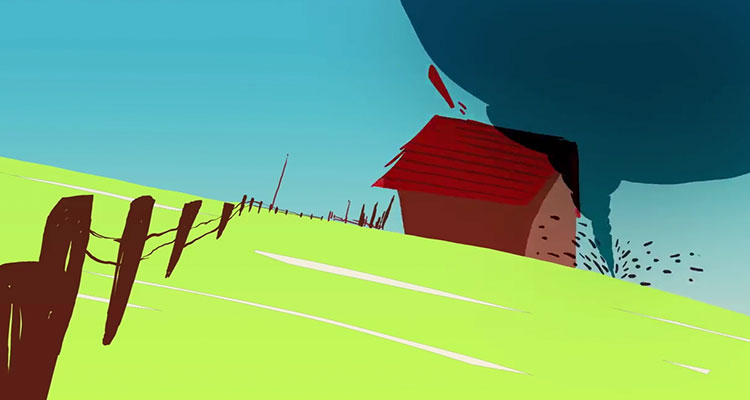I’m not scared of much in nature. Thunder? No biggie. Cockroaches? Stay out of my way.
But tornadoes? They freak me out. I mean 200 mile-per-hour winds that can lift a train or car like a toy? No, thank you.
I’ve only seen one. It was small and bumped into an office building while I was inside. The place shook, but that was it. They called all clear and I drove home, fast. The sky was full of swirly clouds and an eerie yellow-greenish color I’d never seen before. My knuckles were white the whole way home.
That’s why I’m so amazed by people who chase after tornadoes, such as Meteorologist James Spann. His 4-minute, animated lesson on how tornadoes form will help you understand this terrifying natural phenomenon. (Best for ages ten and up.)
Typical Conditions for a Tornado
As Spann points out, we’ve learned a great deal about tornadoes, but there’s much we don’t know. Such as why there can be two identical conditions, yet a tornado may form in one case but not in the other. But here is a typical scenario:
- Tornadoes begin in massive thunderstorms called supercells that can rise 50,000 feet high.
- It must create rapid updrafts of hot air masses.
- As the air masses climb, they can change direction and move more quickly.
- With the storm’s moisture “feeding” the air masses, a vortex—or tube of spinning air—can form.
- Cooler air gets drawn around the spinning air and creates a downdraft.
- Between warm air spinning inside and cooler air wrapping around and pulling down the vortex outside, you can get a big, bad tornado.
View the whole lesson for a fuller understanding:
The “Dig Deeper” section has links to a lot more fun learning:
- The National Oceanic and Atmospheric Administration (NOAA) has more about tornadoes and other extreme weather at its National Severe Storms Laboratory.
- Want to check storm conditions today? NOAA also has a Storm Prediction Center.
- Watch Tornadoes 101 to see footage of how and where tornadoes form.
- For an excellent documentary on tornadoes, watch “Deadliest Tornadoes” on PBS’s NOVA.
- There’s another TED Ed talk called “How To Track a Tornado” by atmospheric scientist Karen Kosiba.
As for me, I’m happy to learn about tornadoes, but from the safety of my armchair!





































